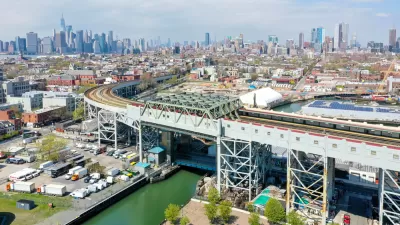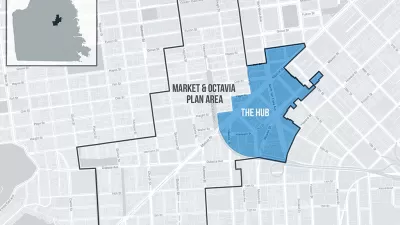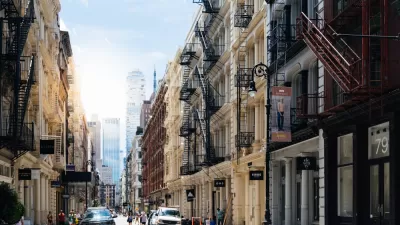Vast amounts of tech money have transformed the city's commercial spaces in unexpected ways.

Adrian Daub takes a closer look at the area around Church and Market streets in San Francisco to better understand the phenomenon of commercial spaces remaining empty after businesses have been priced out:
[Sparky’s diner] was first to go: in 2015 rent suddenly went up, the diner’s owner refused to pay, and Sparky’s was no more. Our usual ideas about gentrification suggest neighborhood standbys get replaced by fancy boutiques and brunch-centric eateries. Instead, after Sparky’s came … nothing. Elsewhere, too, long-term leases timed out, rents increased, and the old neighborhood hangouts disappeared.
The area has seen huge growth in the number of residents and upscale residential developments, but storefronts remain unoccupied, says Daub. "Developers make their money with luxury apartments aimed at high-salaried tech workers, while ground floor retail is an architectural and economic afterthought: giant spaces that any business would have trouble filling with life and justifying financially."
Daub points to California’s Proposition 13 and the cap on property taxes as a factor in this market dynamic. "Owners may pay Nixon-era property tax rates, while renting out those spaces at rates that have exploded in the last 40 years. They, too, can afford to let buildings sit empty."
San Francisco highlights the link between the technology industry and capitalism and the change that ingenuity and money can bring, says Daub. "But walk through parts of San Francisco today, and you get a different sense altogether: not an uncanny effectiveness, but a panicked swirl of homeless capital."
FULL STORY: Abandoned stores, empty homes: why San Francisco's economic boom looks like a crisis

Planetizen Federal Action Tracker
A weekly monitor of how Trump’s orders and actions are impacting planners and planning in America.

Restaurant Patios Were a Pandemic Win — Why Were They so Hard to Keep?
Social distancing requirements and changes in travel patterns prompted cities to pilot new uses for street and sidewalk space. Then it got complicated.

Map: Where Senate Republicans Want to Sell Your Public Lands
For public land advocates, the Senate Republicans’ proposal to sell millions of acres of public land in the West is “the biggest fight of their careers.”

Maui's Vacation Rental Debate Turns Ugly
Verbal attacks, misinformation campaigns and fistfights plague a high-stakes debate to convert thousands of vacation rentals into long-term housing.

San Francisco Suspends Traffic Calming Amidst Record Deaths
Citing “a challenging fiscal landscape,” the city will cease the program on the heels of 42 traffic deaths, including 24 pedestrians.

California Homeless Arrests, Citations Spike After Ruling
An investigation reveals that anti-homeless actions increased up to 500% after Grants Pass v. Johnson — even in cities claiming no policy change.
Urban Design for Planners 1: Software Tools
This six-course series explores essential urban design concepts using open source software and equips planners with the tools they need to participate fully in the urban design process.
Planning for Universal Design
Learn the tools for implementing Universal Design in planning regulations.
Heyer Gruel & Associates PA
JM Goldson LLC
Custer County Colorado
City of Camden Redevelopment Agency
City of Astoria
Transportation Research & Education Center (TREC) at Portland State University
Camden Redevelopment Agency
City of Claremont
Municipality of Princeton (NJ)





























